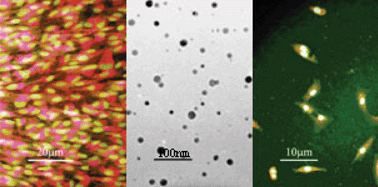Hydroxyapatite (HAP) nanoparticles, typically 20 ± 5, 40 ± 10 and 80 ± 12 nm in diameter, were prepared and their effects on the proliferation of two bone-related cells, bone marrow mesenchymal stem cells (MSCs) and osteosarcoma cells (U2OS) were studied. The cell culture experiments showed improved cytophilicity of the nanophase mineral as compared with conventional HAP. Greater cell viability and proliferation of MSCs were measured on the nano HAP, remarkably for 20 nm sized particles. Interestingly, the growth of osteosarcoma cells was inhibited by the nano HAP and 20 nm sized particles were the best retardant. It is suggested that the HAP nanoparticles can exhibit favorable cell proliferation to optimize biological functionality, in which the particle size is believed to play a key role. These in vitro findings are of great significance for the understanding of cytophilicity and biological activity of nanoparticles during biomineralization.
You have access to this article
 Please wait while we load your content...
Something went wrong. Try again?
Please wait while we load your content...
Something went wrong. Try again?


 Please wait while we load your content...
Please wait while we load your content...